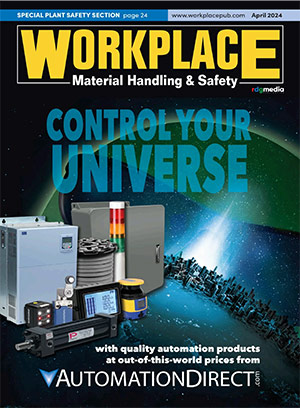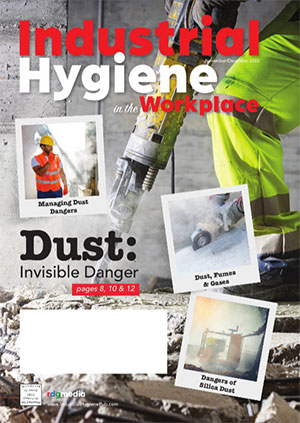Preventing Injuries in the Age of eCommerce
By Brendan Griffin, Contributor

As consumer demand shows no signs of slowing down, it is imperative to instruct employees on the basic athletic mechanics of competent movement when performing at high speeds. (photo courtesy Worklete)
I got my hair cut yesterday. I opted for something new: a kind of Sons of Anarchy-style I saw a guy leaving the barbershop with. It’s a look I’d always envied but assumed I lacked the follicular volume to achieve. Short on the sides; longer on top; and pushed back in a sleek tousle. To my surprise, my barber said, “We could do that. You wanna do that?”
She did it, and I’m happy. But the edges of my joy were blunted the moment she reached for a little gold tin of styling clay I had never seen before—much less used—and certainly don’t own. But she was using it, which means I needed it. Immediately. Of course, this being the future, I was only a keystroke away from having it within hours, thanks to the hard work of the American eCommerce industry.
Add to cart, check out, add same-day delivery—and the gears move.
My wish goes to a server that sends the order to a fulfillment center. The chain reaction begins, as 4oz of hair product take a journey across 14 miles of conveyor belts spanning 1.2 million sq ft of warehouse. It’s an all-hands rush to ensure my hair maintains its shape in time for the weekend.
CONVENIENCE CREATES RISK
But herein lies the issue: When we click our mouse, are we aware of the impact our commercial appetites are having on the physical welfare of another human being? One yoga mat, tube of lip gloss or a copy of The Secret constitutes just one piece of product that a fulfillment center employee is required to touch per hour. In a 10-hour shift, one worker needs to handle at least 3,000 items in order to make their company-mandated quota. And, one worker at one station is only a single atomic force in a massive cosmos of choreographed labor and technology dedicated to the task of getting me whatever I might need as fast as possible. In environments like this, injuries happen just as fast—and far too frequently.
The Catch-22 here is that the indispensable businesses that support the modern consumer depend on volume and speed as their distinguishing features. Their efficiencies give them undeniable leverage over competitors. However, that speed comes at a cost.
A FOUNDATIONAL SOLUTION

Modern workers come in a wide range of ages and physical abilities—which makes comprehensive training challenging. (photo courtesy Worklete)
As consumer demand shows no signs of slowing down, the obvious solution is, in part, to instruct employees on the basic athletic mechanics of competent movement when performing at high speeds. This isn’t easy, given the incredible diversity of today’s workforce. Modern workers come in a wide range of ages and physical abilities—which makes comprehensive training challenging.
One solution might be to simplify the rubric with which they train employees for the physical demands of the job, in order to make sound mechanics more easily achieved when working at high speeds. The human body assumes only a number of basic shapes when in movement. Focusing on helping workers understand the sensation of moving well is an incredibly effective antidote that allows individuals to diagnose potential problems in the moment and make necessary corrections.
What makes this a heavier lift, though, is the time commitment of training workers to help inure them to the physical dangers of working quickly. An intuitive response might be to coach workers on how to move in strong positions at a slower pace, and then progressively dial up the tempo in order to get them accustomed to maintaining those strong positions when working at a pace that’s similar to what they’ll experience on the warehouse floor.
A TOOL FOR FIGHTING FATIGUE
However, these kinds of heuristic training devices, while potentially very effective in helping workers self-assess and become stronger, are hamstrung by the simple yet consistent outlier of fatigue. When athletes get tired, form tends to fall apart. The same can be said of industrial athletes. A long shift leads to an entropic breakdown of form, which then leads to injury. This fix is a little out of my tax bracket—I’m a movement expert, not an HR person. The most obvious solution, to me, would be to install short breaks where workers can have a moment to sync with their own bodies and be reminded to default back into healthier patterns of movement.
Ultimately, the reality of any physical profession is always going to be injury, though how many injuries may be more within our control than we think—even in the up-tempo world of eCommerce. The solutions, while basic in nature, always force us to consider how the human body moves in any situation; and then apply those fundamentals to the environment occupied by workers in a fulfillment warehouse. Chances are, this focus will manifest as significant reductions in musculoskeletal injuries and, in turn, benefits to the business. WMHS
Brendan Griffin is Content & Production Manager at Worklete.



